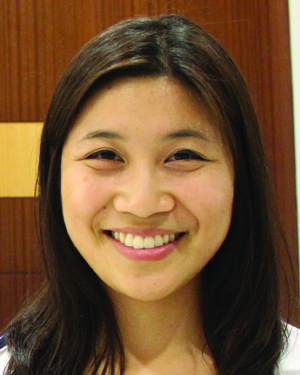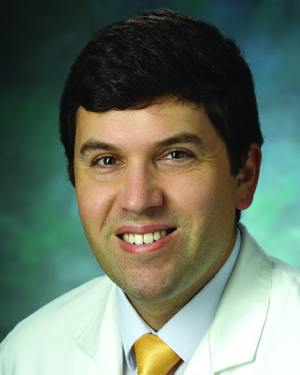A 47-year-old, non-smoking man with a history of type 2 diabetes mellitus, elevated lipoprotein(a) [Lp(a)] level, and a family history significant for dyslipidemia and premature coronary artery disease (CAD) presents to clinic for routine medical appointment. His lipid profile reveals total cholesterol (TC) level of 160 mg/dL, triglycerides (TG) of 298 mg/ dL, high-density lipoprotein cholesterol (HDL-C) level of 41 mg/dL and Friedewald estimated low-density lipoprotein cholesterol (LDL-C) of 59 mg/dL. Given his family history of CAD, he expresses concern about his cardiovascular risk and inquires regarding initiation of statin therapy.
This patient’s LDL-C is below the threshold to be included in the recommended statin treatment group in the 2013 ACC/AHA Guideline on the Treatment of Blood Cholesterol to Reduce Atherosclerotic Cardiovascular Risk in Adults (aka “the 2013 Guidelines”). However, if the Martin/Hopkins LDL-C calculation method is used, this may alter his LDL-C reading enough that he would qualify for statin therapy. Here, we introduce the Martin/ Hopkins method as a potential approach to providing more accurate LDL-C readings and improving evidence-based clinical decision-making.
Atherosclerotic cardiovascular disease (ASCVD) and its associated conditions of ischemic heart disease (IHD), cerebrovascular events and peripheral artery disease remain the leading causes of morbidity and mortality worldwide.1 LDL-C is one of the best-studied risk factors for the development of atherosclerosis1,2 and frequently is assessed in the clinical setting as a treatment target in ASCVD prevention. Reduction of LDL-C levels has been rigorously demonstrated to lower risk of major cardiovascular events and typically is achieved through lifestyle modifications, statin therapies, non-statinbased interventions such as ezetimibe and proprotein convertase subtilisin-kexin type 9 (PCSK-9) monoclonal antibodies.3,4 According to the 2013 ACC/AHA Guidelines, statin therapy is recommended for (1) adults with clinical ASCVD, (2) individuals with LDL-C levels ≥190 mg/ dL, (3) those with diabetes mellitus aged 40-75 and LDL-C from 70 to 189 mg/dL, and (4) those without diabetes mellitus or clinical ASCVD, LDL-C 70-189 mg/dL and an estimated 10-year ASCVD risk score ≥7.5%.5
LDL-C levels traditionally have been calculated using the Friedewald equation. The Friedewald equation was developed on the basis of a 1972 study that involved 448 patients whose families had genetic dyslipidemias and were followed at the National Institutes of Health (NIH).6 The equation estimates LDL-C as TC – HDL-C – TG/5 in mg/dL.6 In this equation, the value of very low-density lipoprotein cholesterol (VLDL-C) is approximated through the quotient of TG/5. The equation was limited in use to those with TG <400 mg/dL, since chylomicrons are more common at higher TG levels and decrease the accuracy of LDL-C estimation.
Though the Friedewald equation has become an entrenched mainstay in clinical practice, one of the equation’s key failings is its gross estimation of the TG:VLDL-C ratio. A fixed ratio of 5:1 belies the extensive variance of triglyceride and non-HDL-C to VLDL-C ratios present among patient populations. The 1986 Lipid Research Clinics Prevalence Study conducted in more than 10,000 study participants demonstrated that the mean TG:VLDL-C ratio varied considerably. At the time, few if any of the modern lipid-lowering therapeutics – e.g. statins, ezetimibe, PCSK-9 inhibitors, etc. – existed, and the Friedewald equation’s original study cohort included few individuals whose LDL-C fell within the modern high-risk treatment group of <70 mg/dL.6 In fact, the Friedewald equation becomes particularly inaccurate in nonfasting samples, when TG levels are high, and when there are low LDL-C levels (<70 mg/dL).8,9 This could expose patients to harm because of undertreatment due to falsely low LDL-C estimates.
A 2013 study of 1,350,908 U.S. individuals from the Very Large Database of Lipids,10 cholesterol concentrations including those in VLDL were directly assessed after lipoprotein separation by ultracentrifugation.10 This allowed direct comparison of TG levels to VLDL-C levels in every individual in the dataset. Strataspecific median TG:VLDL-C ratios were determined by strata of triglycerides and non-HDL-C (since these are the two variables that explain most of the variance in TG:VLDL-C). The new algorithm to estimate LDL-C is: (total cholesterol) – (high density lipoprotein cholesterol [HDL-C]) – (triglycerides/adjustable factor), where the adjustable factor stood for the strata-specific median TG:VLDL-C ratios.10
The cohort’s measured TG:VLDL-C ratios were not normally distributed and demonstrated positive skew.10 Of note, the median ratio of TG:VLDL-C was 5.2, which is very close to the original Friedewald factor of 5. Yet, that is the average patient. Only about one-third of samples had a TG:VLDL-C ratio of 4.5 to 5.5.10 Many individuals exceeded these ratios, and the full range of ratios went from 3.1 to 9.5 in those with TG < 400 mg/dL. These newly calculated ratios allowed for closer approximation of VLDL-C and, in turn, LDL-C values in patients with triglyceride levels lower than 400 mg/dL, particularly for LDL-C values less than 70 mg/dL.10
This novel equation, which some groups have referred to as the “Martin/Hopkins method,” has been further validated through multiple clinical investigations in the United States, Japan, Korea, Taiwan and elsewhere.11-17 The sample sizes of these study cohorts ranged from 1,828 to 1,545,634 individuals. The majority agreed that this novel method produced more accurate estimations of LDL-C,11-17 particularly in settings of low LDL-C and high triglyceride levels.14,17
The Martin/Hopkins method of LDL-C estimation has implications on the current practice of lipid management. In a 2017 study that examined the concordance of the Martin/Hopkins equation with the Friedewald equation on 2,381 patient lipid profiles from the National Health and Nutrition Examination Survey (NHANES), Johns Hopkins Hospital and Mayo Clinic, Whelton, et al. found that the Martin/ Hopkins method re-categorized 14%-20% of participants from an LDL-C level of <70 mg/dL to an LDL-C level of ≥70 mg/dL.14 This indicates that a significant number of patients currently categorized in the lowrisk LDL-C range through the Friedewald equation actually may have LDL-C values above the high-risk threshold of 70 mg/ dL and, in fact, might “qualify” for lipidlowering therapy based upon the 2013 Guidelines. The Whelton paper showed that non-HDL-C and apolipoprotein B (apoB) also were higher in this reclassified group, further corroborating the clinical importance of this finding and showing that improving LDL-C estimation could in part address the push to use these measures beyond LDL-C. A paper this year by Sathiyakumar, et al., showed that the Martin/Hopkins method avoids the inaccuracy that occurs with non-fasting estimation of LDL-C by the Friedewald equation.17
Presently, the Martin/Hopkins method is available as a smartphone application and in multiple digital distribution platforms. However, it is best if clinical laboratories automate use in clinical laboratory systems. To this end, it already has been implemented by a major diagnostic laboratory in the United States and has been adopted by several other laboratories around the world.
Although the Martin/Hopkins method is more accurate than the Friedewald estimation and more accurate than any other reported estimation procedure for LDL-C, it should be noted that any estimation of LDL-C could be inaccurate in certain settings. Such settings include severe hypertriglyceridemia and type 3 Fredrickson-Levy dyslipidemia.10
In regard to the previously mentioned case study, a re-calculation of the patient’s LDL-C using the Martin/Hopkins equation shows an LDL-C level of 83 mg/dL. This is 24 mg/dL – or 41% – higher than the Friedewald equation. The reason for the discrepancy is the use of a factor of 5 by the Friedewald equation, which leads to an overestimate of VLDL-C and, therefore, an underestimate of LDL-C. The personalized factor by the Martin/Hopkins equation is 8.3. Given this patient’s age and personal history of type 2 diabetes, along with an LDL-C of 83, he now qualifies for statin therapy based on the 2013 Guidelines, “statin benefit groups,” whereas statin therapy would not be supported if the Friedewald equation were used to calculate LDL-C (exposing the patient to harm from inappropriate withholding of proven therapy). His potential to benefit from therapy is further evidenced by his high Lp(a) and family history of dyslipidemia and premature ASCVD. On the basis of shared decision-making, the patient and his clinician decide to initiate atorvastatin 40 mg daily.
The current method of LDL-C calculation through the Friedewald equation has become outdated in light of the recent developments in LDL-C quantification. Using the novel Martin/Hopkins method, clinicians may more accurately assess and treat dyslipidemia and may, in turn, lead to reduced cardiovascular events and improved population health.
Disclosure statement: Ms. Wang has no disclosures to report. Dr. Martin has received honorarium from Quest Diagnostics, Amgen, Sanofi-Regeneron and Akcea Therapeutics. References available here.




.jpg)
.png)












